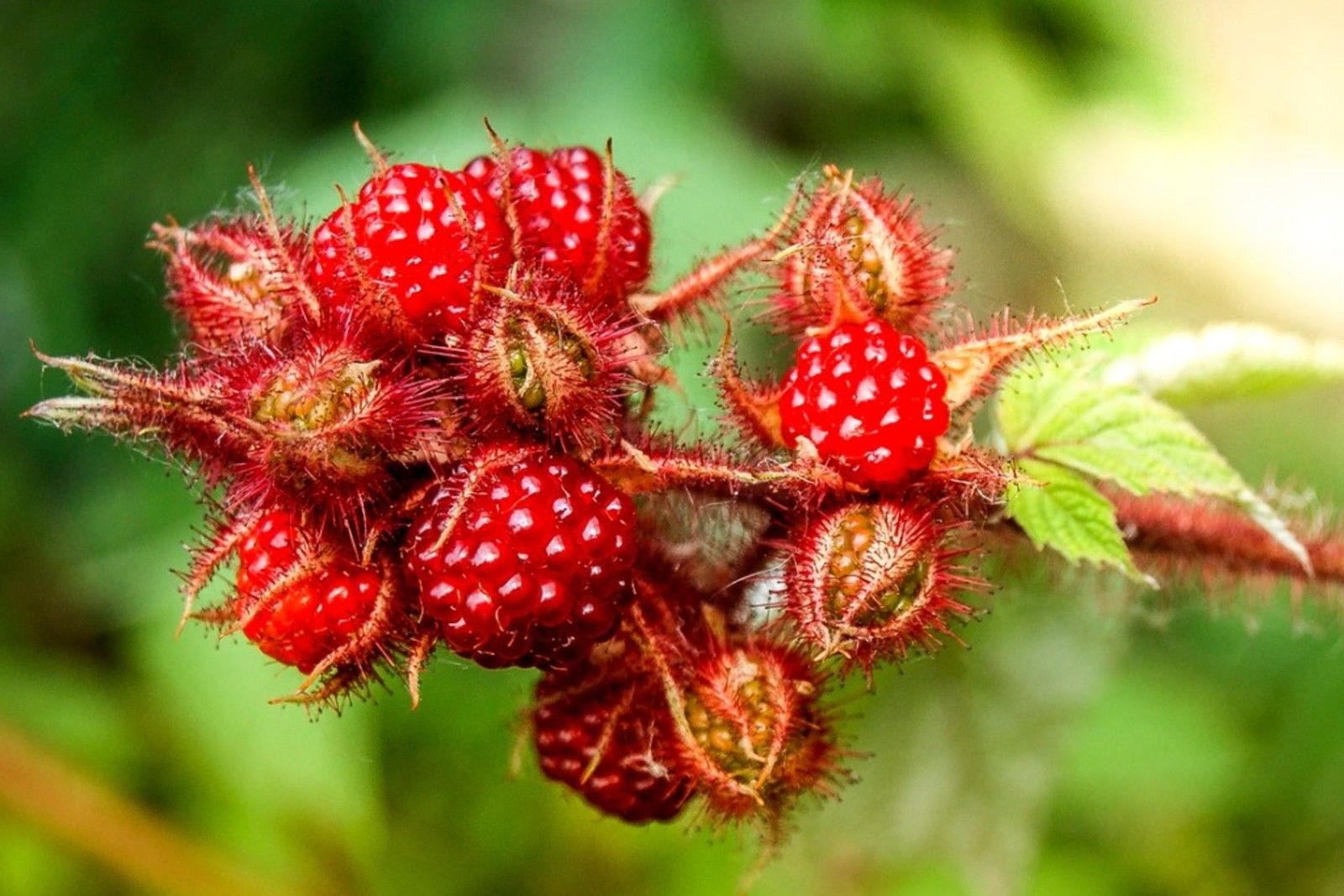
What is a wineberry? This intriguing fruit, also known as Rubus phoenicolasius, is a relative of raspberries and blackberries. Originating from Asia, wineberries have made their way into North American forests and gardens. They stand out with their bright red, juicy berries encased in a fuzzy, red calyx. These berries are not just eye-catching; they pack a punch of flavor, blending sweet and tart notes. Wineberries thrive in the wild, often found along roadsides and forest edges. They ripen in mid-summer, offering a delightful treat for foragers and wildlife alike. Curious about more? Let's dive into 28 fascinating facts about this unique berry!
What is Wineberry?
Wineberry, also known as Japanese wineberry, is a unique fruit that often gets overlooked. This small, red berry is not only delicious but also packed with interesting facts. Let's dive into some fascinating details about this intriguing fruit.
-
Wineberry is native to Japan, China, and Korea. It was introduced to the United States in the late 1800s.
-
The scientific name for wineberry is Rubus phoenicolasius. It belongs to the rose family, just like raspberries and blackberries.
-
Wineberry plants have a distinctive appearance. Their stems are covered in fine red hairs, giving them a fuzzy look.
-
The berries are small, round, and bright red when ripe. They have a sweet-tart flavor that many people find irresistible.
Wineberry's Unique Characteristics
Wineberry stands out due to its unique features and growth habits. Here are some facts that highlight what makes this berry special.
-
Wineberry plants can grow up to 9 feet tall. They spread quickly, often forming dense thickets.
-
Unlike many other berries, wineberries are encased in a hairy calyx that protects them from pests and harsh weather.
-
The calyx opens up when the berry is ripe, revealing the bright red fruit inside.
-
Wineberries are typically harvested in mid-summer, around July and August.
Nutritional Benefits of Wineberry
Wineberries are not just tasty; they are also nutritious. Here are some health benefits you can gain from eating these berries.
-
Wineberries are rich in vitamins C and K. These vitamins are essential for immune function and blood clotting.
-
They contain antioxidants, which help protect your cells from damage caused by free radicals.
-
Wineberries are low in calories, making them a healthy snack option.
-
They also provide dietary fiber, which aids in digestion and helps maintain a healthy gut.
Wineberry in the Ecosystem
Wineberries play a significant role in their natural habitat. Here are some facts about their ecological impact.
-
Wineberry plants provide food for various wildlife, including birds and small mammals.
-
The dense thickets formed by wineberry plants offer shelter and nesting sites for animals.
-
Wineberries can be invasive in some areas, outcompeting native plants and altering local ecosystems.
-
Despite their invasive nature, wineberries can help prevent soil erosion due to their extensive root systems.
Culinary Uses of Wineberry
Wineberries are versatile in the kitchen. Here are some ways you can incorporate them into your meals.
-
Wineberries can be eaten fresh, straight off the plant. Their sweet-tart flavor makes them a delightful snack.
-
They can be used in desserts like pies, tarts, and cobblers.
-
Wineberries make excellent jams and jellies. Their natural pectin content helps them set well.
-
You can also use wineberries in savory dishes, such as salads or sauces for meat.
Growing Wineberry
Interested in growing your own wineberries? Here are some tips to get you started.
-
Wineberries prefer well-drained soil and partial to full sunlight.
-
They are hardy plants that can tolerate a range of soil types and conditions.
-
Wineberry plants are propagated through seeds or cuttings. They can also spread via their root system.
-
Regular pruning helps manage their growth and encourages more fruit production.
Fun Facts About Wineberry
Here are some additional fun and quirky facts about wineberries that you might not know.
-
Wineberries were originally brought to the U.S. for breeding purposes to improve raspberry varieties.
-
The name "wineberry" comes from the berry's wine-like color and flavor.
-
In Japan, wineberries are known as "Yamaichigo," which means "mountain strawberry."
-
Wineberries have been used in traditional medicine for their supposed health benefits, including treating colds and digestive issues.
The Final Sip on Wineberries
Wineberries are more than just a pretty face in the berry world. These vibrant red fruits pack a punch with their unique flavor, nutritional benefits, and versatility in the kitchen. Whether you're foraging in the wild or growing them in your backyard, wineberries offer a delightful addition to your diet. They’re rich in antioxidants, vitamins, and minerals, making them a healthy choice for snacks, desserts, or even savory dishes. Plus, their historical and cultural significance adds an extra layer of appreciation for these little gems. So next time you come across wineberries, remember their fascinating background and the many ways they can enhance your culinary adventures. Enjoy the burst of flavor and the health benefits they bring to your table. Cheers to discovering the wonders of wineberries!
Was this page helpful?
Our commitment to delivering trustworthy and engaging content is at the heart of what we do. Each fact on our site is contributed by real users like you, bringing a wealth of diverse insights and information. To ensure the highest standards of accuracy and reliability, our dedicated editors meticulously review each submission. This process guarantees that the facts we share are not only fascinating but also credible. Trust in our commitment to quality and authenticity as you explore and learn with us.
